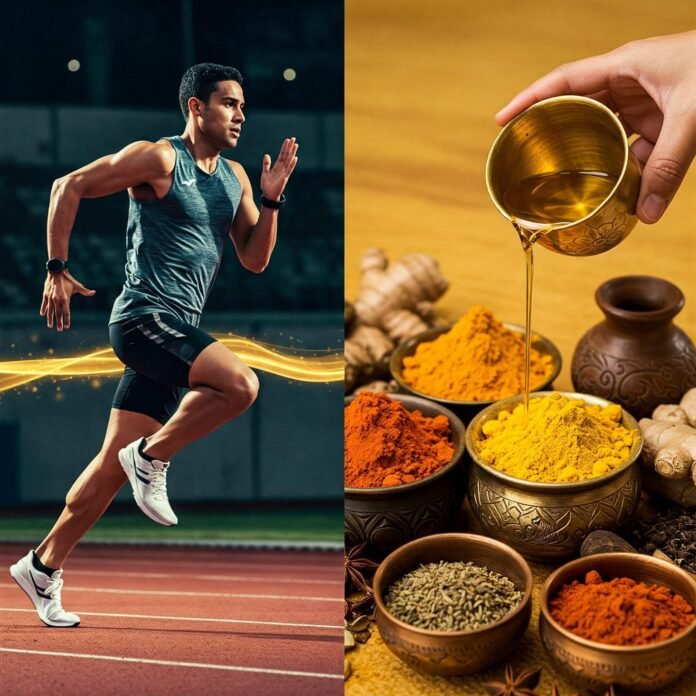Fitness enthusiasts are constantly seeking effective strategies to maximize their training and achieve peak physical condition. While modern fitness methodologies offer a wealth of knowledge and techniques, integrating the ancient wisdom of Ayurveda, the traditional Indian system of medicine, presents a powerful and holistic approach. This article delves into incorporating Ayurvedic principles into modern fitness training, exploring how understanding your unique mind-body constitution can personalize your workouts, optimize recovery, and ultimately lead to more sustainable and fulfilling fitness outcomes. By strategically blending these two powerful systems, you can unlock your body’s full potential.
Understanding Your Dosha: The Ayurvedic Basis for Modern Fitness
In Ayurveda, understanding your predominant dosha – Vata, Pitta, or Kapha – is fundamental to a personalized approach to health and well-being. Therefore, this knowledge is crucial when applying Ayurvedic principles to modern fitness regimens.
- Vata (Air and Space): Individuals with a dominant Vata dosha often exhibit high energy levels but can experience fluctuations and fatigue. Consequently, fitness routines emphasizing consistent, grounding, and warming exercises are generally most beneficial.
- Pitta (Fire and Water): Pitta-dominant individuals typically possess strong energy and endurance; however, they can be prone to overheating and inflammation. As a result, they tend to thrive with moderate-intensity workouts coupled with cooling recovery practices, aligning with Ayurvedic principles for Pitta.
- Kapha (Earth and Water): Kapha-dominant individuals generally have good stamina but may experience sluggishness. Thus, more intense and stimulating forms of exercise are often recommended within an Ayurvedic approach to fitness for Kapha.

Applying Key Ayurvedic Principles to Enhance Modern Fitness Training
To effectively optimize modern fitness training by incorporating Ayurvedic concepts, it’s essential to understand and apply these core principles to your exercise journey.
Leveraging Ayurvedic Timing for Optimal Modern Fitness Result
Ayurveda emphasizes aligning with natural daily and seasonal rhythms. Therefore, for fitness, strategically utilizing Ayurvedic timing in your training schedule can significantly impact your energy levels and recovery:
- Kapha Time (6 am – 10 am): This period is often the most conducive to intense workouts, as energy levels tend to be naturally higher, supporting the goals of incorporating Ayurvedic principles.
- Pitta Time (10 am – 2 pm): Moderate-intensity workouts can be particularly effective during this time, as the digestive fire (agni) is strong, aiding nutrient assimilation crucial for Ayurvedic fitness.
- Vata Time (2 pm – 6 pm & 2 am – 6 am): Lighter activities such as yoga, stretching, or brisk walking are generally recommended during these times, aligning with the gentler aspects of Ayurvedic exercise.
Ayurvedic Nutrition: Fueling Your Body for Peak Modern Fitness
Proper nourishment is paramount for both performance and recovery in modern fitness. Thus, adopting an Ayurvedic approach to nutrition to support your fitness goals involves understanding your dosha’s specific dietary needs:
- Pre-Workout: For Vata, easily digestible carbohydrates and warming spices are often recommended. For Pitta, cooling and hydrating options are preferable. For Kapha, lighter, energizing foods are generally best, all informed by Ayurvedic principles.
- Post-Workout: Focusing on replenishing energy stores and supporting muscle recovery with dosha-appropriate foods is key to Ayurvedic fitness recovery. [Outbound Reference Link: Consider linking to a reputable article on post-workout nutrition for athletes, e.g., from a sports science organization.]
Boosting Modern Athletic Recovery with Ayurvedic Practices
Adequate recovery is as crucial as the training itself for achieving optimal modern athletic performance. Consequently, incorporating Ayurvedic recovery practices for athletes can significantly enhance the body’s repair and rejuvenation processes:
- Abhyanga (Self-Massage): Using warm, dosha-specific oils can soothe muscles, improve circulation, and calm the nervous system, aligning with Ayurvedic principles for muscle recovery.
- Restorative Yoga and Meditation: These practices can effectively reduce stress and promote deep relaxation, thereby aiding in muscle repair and overall well-being within an Ayurvedic fitness framework.
- Herbal Remedies: Certain Ayurvedic herbs may offer valuable support for recovery and reducing inflammation, such as Ashwagandha and Turmeric, integral to a holistic Ayurvedic approach to fitness. [Outbound Reference Link: Consider linking to a reputable resource on the benefits of specific Ayurvedic herbs for athletic recovery.]
The Ayurvedic Path to Mindful Movement in Modern Fitness
Ayurveda emphasizes the profound connection between the mind and body in all activities, including exercise. Therefore, integrating an Ayurvedic perspective into mindful modern exercise encourages:
- Paying Attention to Your Body: Cultivating awareness of your breath, physical sensations, and energy levels during workouts is a core tenet of Ayurvedic fitness.
- Balancing Intensity: Avoiding excessive exertion, particularly if you are Vata dominant or experiencing depletion, is a key aspect of incorporating Ayurvedic principles.
- Integrating Yoga and Flexibility: Incorporating practices like yoga and stretching can improve flexibility, enhance balance, and contribute to injury prevention within a holistic Ayurvedic approach to modern fitness.
Sample Integration Strategies for Each Dosha
- Vata Athlete: May find benefit in strength training with moderate weights and longer rest periods, complemented by gentle yoga and regular abhyanga with sesame oil, reflecting Ayurvedic recommendations for Vata.
- Pitta Athlete: Might thrive with interval training but should prioritize proper cool-down practices such as Sitali breath and using coconut oil for massage, aligning with Ayurvedic principles for Pitta.
- Kapha Athlete: Could benefit from high-intensity interval training (HIIT) and more dynamic forms of exercise, potentially incorporating dry brushing (Garshana) for lymphatic stimulation, as suggested by Ayurvedic guidelines for Kapha.

Conclusion: A Holistic Approach to Modern Fitness
Incorporating Ayurvedic principles into modern fitness training presents a powerful and personalized pathway to elevate your fitness journey, optimize your results, and foster enduring well-being. By gaining an understanding of your unique dosha and thoughtfully aligning your training, nutritional choices, and recovery protocols with Ayurvedic insights, you can cultivate a more harmonious relationship with your body, train with greater intelligence, experience enhanced energy, and achieve a profound connection to your physical self. Embrace this holistic integration and unlock your full athletic potential. [Outbound Reference Link: Consider linking to a reputable Ayurvedic practitioner directory: https://ayurveda.memberclicks.net/directory-find-a-professional]


































